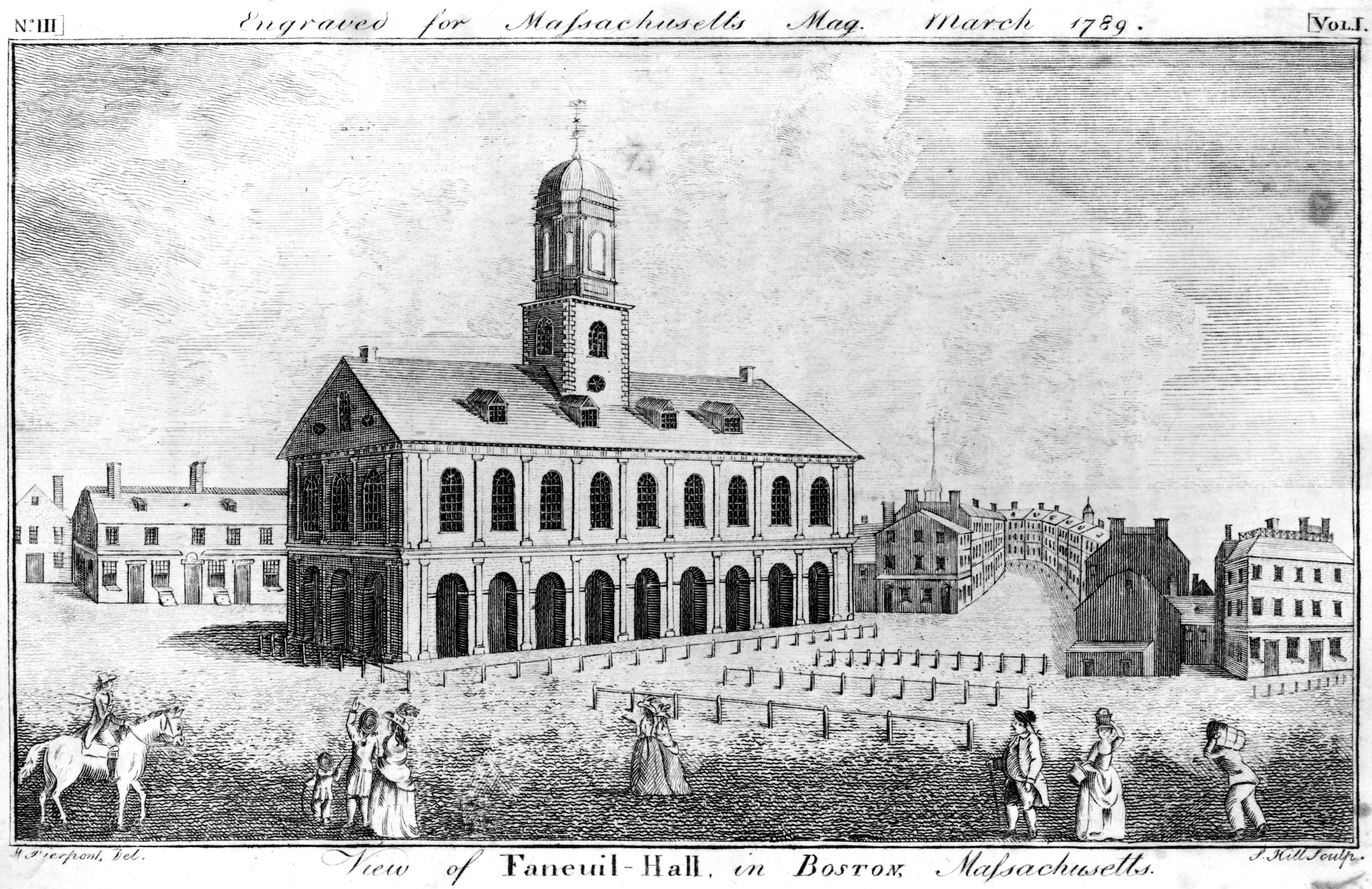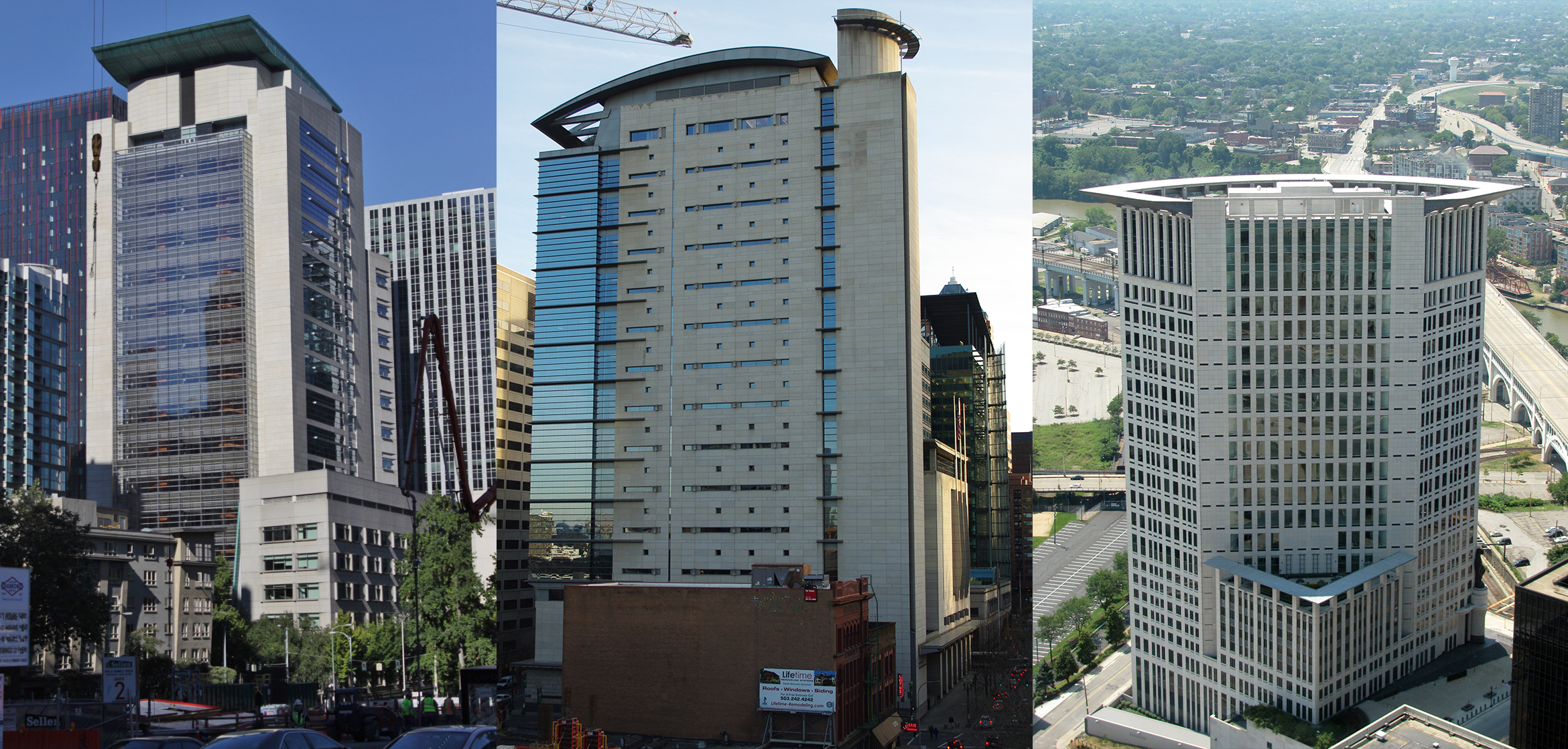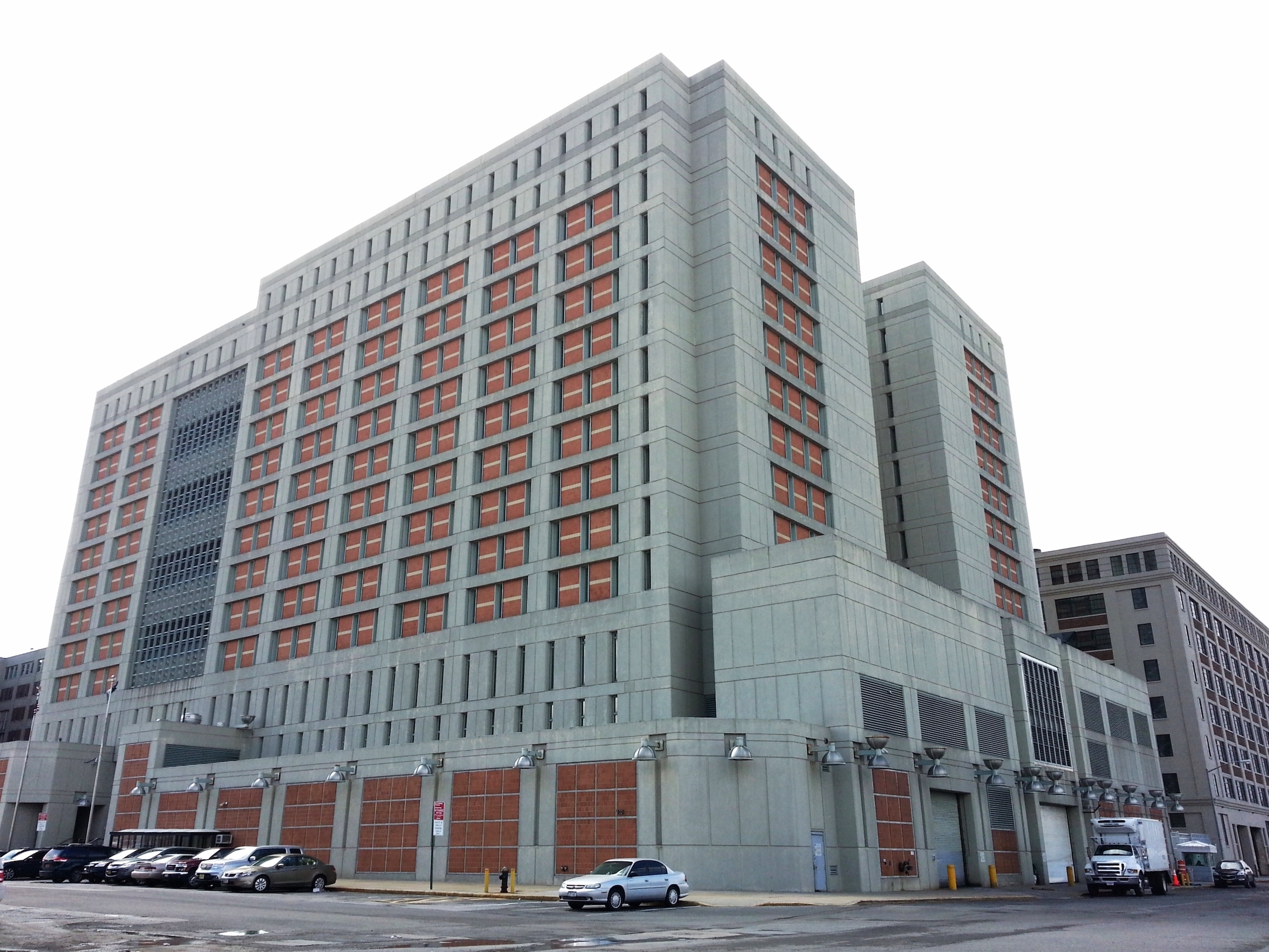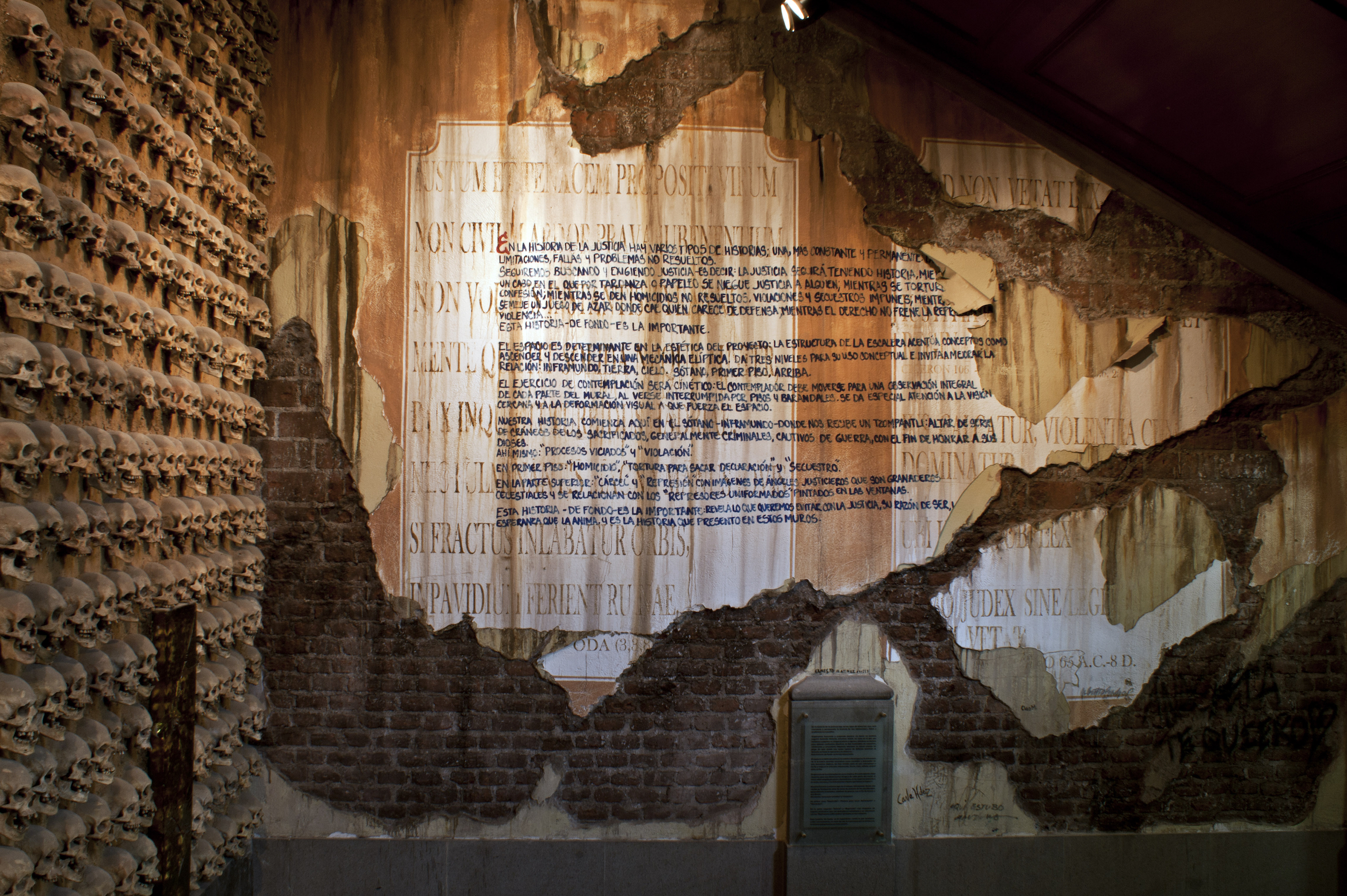The Location of Justice
An examination of the pervasive and often overlooked infrastructure of criminal justice in New York and the spaces that could serve a more just city.
In This SeriesWe are celebrating 15 years — and counting — of stories that are deeply researched and deeply felt, that build a historical record of what the city has been.
What kind of physical structure ensures that justice is done? If legal theorists don’t give the question much thought, architects and planners resort to the same answers again and again. The image of the courthouse in the popular imagination — classical temple on the outside, somber stage set on the inside — appears timeless, but it is neither an ancient arrangement nor one that is guaranteed to endure. The enclosure of justice in purpose-built buildings and courtrooms has a particular history. Moving trials to the confines of the courtroom in the early days of the US republic offered guarantees of due process and protection from mob justice. Tracing the historical relationship between courts’ form and function, legal scholar Norman Spaulding invites us to consider: what sort of house does contemporary justice demand?’ Today, when a day in court is more likely to mean cutting a deal behind closed doors or a holding a hearing via closed circuit TV — and just as likely in a generic office building as a hall of justice — public oversight and a fair process can not be guaranteed.
Theories of justice have not had much at all to say about the space in which it is traditionally administered. Courts must have “jurisdiction,” in the sense of authority over the parties and the subject matter of the dispute, but once a proper court is identified the significance of “location” generally disappears from legal analysis. This indifference to location is more than a regrettable oversight by judges and lawyers, it is irresponsible. Just as the design and structure of a hospital has profound consequences for everything from the doctor-patient relationship to the way a society understands pain, death, and public health, the space in which justice is administered profoundly affects how it is administered, what it means for a society to see justice done, and how order and liberty are mediated.
New insights into the design history of early American courthouses have shown that courthouses were vital public fora, and trials were dramatic public spectacles. The work of architectural historians such as Martha J. McNamara and Carl R. Lounsbury shows that state and county courthouses not only served as public spaces for the conduct of civil and criminal trials, but also for countless other essential judicial and administrative functions directly affecting the lives of residents, travelers, transients, and people doing business in the jurisdiction (including taxation licensure, weights and measures, probate, recording of deeds, marriage licensure, etc.). As importantly, “court days” drew all levels of society and all manner of social engagement during the colonial period and well into the 20th century.
These histories also reveal the central relationship of courthouse design and construction to the authority of law and the legal profession, as well as to architects’ parallel quest for professional authority. Although judicial administration occurred primarily in multi-purpose public spaces in the early colonial period (taverns, town halls, and even public squares), as the adversary system matured and, in particular, as the right of confrontation via cross-examination in trials before local jurors became standard practice, courthouses became highly specialized, enclosed spaces. Indeed, by the late eighteenth century courthouses possessed many of the features we associate today with the process of seeing justice done. Interiors were increasingly partitioned and hierarchically segmented in order to express the division of judicial labor (among clerks, attorneys, judge, witnesses, jurors, and bailiffs), to control the structure of confrontation within this adversarial space (separate tables for the parties and their counsel, open floor plans between the bar and an elevated bench, boxes for witnesses and other role players), and to delineate appropriate means of public participation (mainly via the restriction of media and spectators to gallery seating and the use of completely private space for jury deliberation).
These new purpose-built courthouses also centralized primary adjudicative and administrative functions into a single, distinctive, centrally located, and increasingly impregnable building. While early colonial and frontier exteriors were made from simple, inexpensive, and impermanent materials such as wood – and were sometimes burned down by disgruntled litigants – city and county courthouses built in the late 18th and early 19th centuries were increasingly constructed of brick and stone in response to new legal and symbolic demands.
Enclosure on these terms not only symbolized the independence of law from political, commercial, and social space; it provided means to restrict access, limit vandalism, minimize the disruption of trial, and, perhaps above all, to induce deference toward law in a democratic society perpetually suspicious of the authority of elite judges and lawyers. As with other civic buildings, interior design features borrowed heavily from English courts, English town halls, and above all, churches. Backless benches facing a curvilinear, elevated, panel-backed bench with a central canopied armchair unmistakably recalled pulpit and pews, while arcaded piazzas, pedimented porticos, and compass-headed windows directly copied exterior design features of Anglican churches.
The apotheosis of ecclesiastical influence, and the beginning of the most enduring wave of American courthouse design, was Thomas Jefferson’s widely copied design for the Richmond, Virginia capitol building, completed in 1789, a year after the U.S. Constitution was ratified. Many other state capitol buildings, the United States Supreme Court building, the Lincoln Memorial, and, most importantly for present purposes, countless state and local courthouses around the country share the neoclassical design features of Jefferson’s model: a grand hexastyle pedimented portico supported by two story columns in one of the three canonic orders resting on a plinth; a low roofline; stone block walls; columns or pilasters running the length of the building; double-tier windows. This form became the standard model for courthouse design in the antebellum period and, to this day, in nearly all visual media, it remains the iconic popular representation of the administration of justice.
What made this neoclassical style so salient in American public spaces, and especially American courthouses, was the use of ancient templar forms designed to inspire religious reverence in a new nation founded on principles of popular sovereignty and republican government. These were truly representational facades — designed more to assuage than dispel profound anxieties about how to mediate freedom and authority in a fledgling, pluralistic, democratic society. The space in which justice was to be administered thus expressed and evoked a durability and faith in the laws and constitutional structure of that could only have been anticipatory in our as yet quite fragile democratic experiment.
Crucially, this enclosure of the space for the administration of justice was accompanied by a parallel enclosure in the rules governing the adversary system. Formalization of rules for pleading and appearance in court developed alongside the centralization and specialization of adversarial space. This conjunction of spatial and procedural enclosure had two major consequences. The first is that the American concept of due process of law became intimately bound up with the adversarial space of the courtroom trial. Live viva voce confrontation in publicly observed jury trials held in purpose-built structures according to prescribed rituals of persuasion came to define the local practice of justice. Meaningful participation by the public (via jury service and public observation) as well as the parties was ensured not only by the organization of space but by the formalization of procedural law. Inclusion and democratic responsiveness thus arose in and through specific legal and structural rules of enclosure. And it is no accident that the dominant, indeed controlling, metaphor for the constitutional guarantee of due process remains the courtroom trial. When we imagine justice being done without vigilantism it is in a courtroom trial.
A second effect of the conjunction of spatial and procedural enclosure was to amplify the importance of expertise. Lawyers and judges made themselves indispensable by virtue of their control over the rules of procedural enclosure. In the mid-19th and 20th centuries this fed popular resentment and associated reform movements designed to protect the accessibility and responsiveness of the courts to ordinary people. Yet, through these epicycles of reform and retrenchment, the traditional adversarial space of courtroom trial remained the hallmark of the local practice of justice.
Modern debates about courthouse design and the adversary system take on a different meaning once the role of enclosure is drawn into relief on these terms. The seeming disorder and inefficiency of an open trial is due in no small measure to the fact that it uses the traditional enclosure of adversarial space to reproduce the very indeterminacy (factual and legal) which it was designed to resolve. Inside the triangular lines of communication that shape the adversarial space of a courtroom trial (e.g., between judge, jurors, and attorneys; between judge, witnesses, and attorneys; between the parties, the judge, and jurors; and between the public in attendance, the judge, and witnesses or jurors), participants make and test representations about the dispute in each other’s presence and in real time. It is dynamic space — as dynamic as the memories that factual representation is designed to recall and as dynamic as the interpretive gap between general propositions and concrete cases.
Effective resolution arises by structuring enclosure in such a way that the anxiety of the participants and the public about the indeterminacy of law and the possibility of seeing justice done in court are put in play. Resistance, disruption, surprise, adversarial excess, deception, nullification, and passion are neither endorsed nor invited, but they are always possible. There is room for unexpected reversals — room for the embarrassment of reason to be displayed in the very space in which we hope and expect to see reasoned argument prevail. And there is public space in and about the courthouse in which the local practice of justice can be reported, mocked, satirized, defied, called to account before the people and the press for its failings (real and perceived), or ignored altogether as court is in session. The traditional organization of this space thus concedes, if it does not celebrate, that in a pluralistic society justice is not a fixed set of principles to be scientifically applied, but rather a set of contested relations to be mediated.
More fully enclosed adjudicative spaces, by contrast, express hostility to the indeterminacy of law and fact. Reason is not to be embarrassed. The public is excluded or marginalized, the idiosyncrasies of juries are strictly contained, indeed, superseded by the supposedly more rational deliberation of judges in the privacy of chambers; and, above all, the cost, potential disorder, and delay of open trials are replaced whenever possible by the private ordering of plea bargains and alternative dispute resolution systems or mass bureaucratic processing of claims. Law is administered in private conference rooms, not courtrooms, by judges, bureaucrats, and even algorithms, not jurors. If pre-trial proceedings or trial must be held in open court, it is increasingly in a courtroom to which the public has strictly limited access – via closed circuit television, elaborate exterior security screening, and in buildings that resemble commercial office space and bear few indicia of their public status.
The convergence of these various techniques of displacement, procedural control masquerading as “case management,” and the all too often compulsory substitution of adjudication by contract via arbitration clauses suggest that enclosure no longer operates in the service of public, democratically accountable, and participatory adversarial exchange. Indeed, the data show that trial has become a vanishingly rare event as late 20th and 21st century courts have dramatically expanded rules designed to avert trial. In most jurisdictions, fewer than five percent of civil and criminal cases reach trial. In some, fewer than three percent reach trial. In criminal cases plea bargaining has almost completely replaced trial. And defendants who supposedly enjoy a constitutional presumption of innocence frequently are housed with and treated as prisoners.
In a particularly egregious expression of this shift, a well-intentioned but imperious city court judge in Troy, New York repeatedly failed to inform defendants of their right to counsel, set wildly excessive bail for minor crimes (obliging defendants to plead guilty just to get out of jail), coerced numerous guilty pleas, and most remarkably, unilaterally entered guilty pleas for defendants while they were not present in court. The judge was removed by the Court of Appeals in 2004, but his local popularity and his insistence that he had been helping to see justice done reflect the extent to which enclosure has become an end in itself – criminal defendants may never get their day in court in any meaningful sense of the term. Amy Bach’s book Ordinary Injustice and the Department of Justice’s report on the functioning of the municipal courts in Ferguson, Missouri indicate that this has become a truly national problem – those who cannot afford private counsel face mounting fees, fines, and jail time for their debts instead of fair hearings in open court.
Secrecy, control, security, efficiency, and bureaucratic rationality are not, in the first instance, undemocratic values. No system of modern dispute resolution can function without enclosure. Confidential space is imperative for settlement negotiations to take place (nowhere near every case can go to trial). Jury deliberation is and must be secret to function. Courthouses must not be too vulnerable to vandalism or attack by disgruntled litigants or third parties. Civil and criminal adjudication must not drain the public fisc or be too costly for ordinary people to pursue. And rational deliberation cannot be subordinated to excessive adversarial histrionics. But there are grave risks associated with treating enclosure as an end in itself, all the more so at a moment when cultural and political tolerance for other even more enclosed practices (mass incarceration, indefinite detention, torture, preemptive warfare, executive fiat, and perhaps most significantly, targeted killing) has increased.
The challenge for courts, architects, and urban planners is to maintain a proper balance between enclosure and other rule of law values, such as the right of the public and litigants to meaningfully participate in adjudication, respect for the equal dignity of parties who come before the courts, sensitivity to the distinctive needs of poor and low income litigants, and democratically transparent and accountable decision-making. At present, the greatest barrier to restoring balance is deep professional skepticism about whether ordinary due process vindicated in traditional adversarial space is adequate to resolve 21st century disputes. This is evident not only in the forms of procedural enclosure and judicial hubris that restrict the role of juries and public participation, but in design principles that amplify and complement procedural enclosure by diminishing the accessibility and transparency of the administration of justice.
If we are to maintain meaningful democratic participation in the administration of justice, that objective must be manifest in the structures in which adjudication takes place. At a minimum that means preserving the core design principle of traditional adversarial space – a structure within which live viva voce testimony and participatory exchange can take place and be observed by the public. More ambitiously, as Judith Resnik and Dennis Curtis have argued in their magisterial book Representing Justice, 21st century courts could be designed to make explicit “visual references to the problematic circumstances under which they function.” Innovative design principles could, for instance, incorporate culturally specific legacies of injustice as a reminder to the people and to elite judges and lawyers of the fragility of the administration of justice as well as the risks of corruption, excessive enclosure, and other forms of institutional failure. The history of the local practice of justice teaches nothing if not that the space in which justice is done shapes what we think it means.
This essay was adapted from Norman W. Spaulding, “The Enclosure of Justice: Courthouse Architecture, Due Process, and the Dead Metaphor of Trial,” Yale Journal of Law & the Humanities 24:1 (2012).
The views expressed here are those of the authors only and do not reflect the position of The Architectural League of New York.
An examination of the pervasive and often overlooked infrastructure of criminal justice in New York and the spaces that could serve a more just city.
In This Series






